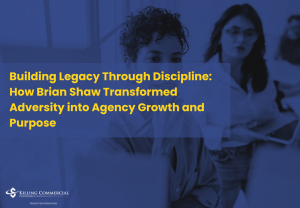Streamlining Agency Billing and Premium Financing: Leveraging FedNow, 3-D Secure, and Integrated AMS for Faster Funding

Middle-market insurance agencies have long wrestled with the legacy “buy-bill-collect” model, in which carriers invoice agencies, agencies collect premiums from clients, and only then remit payment to carriers. This antiquated workflow creates operational friction, delayed cash flow, and elevated chargeback risks—all of which can erode profitability and client satisfaction. Today, however, powerful innovations in digital payments and agency management systems are enabling a modern “bill-collect-buy” paradigm that dramatically accelerates fund availability, minimizes disputes, and unlocks new revenue streams through premium financing.
In this post, we’ll explore how premium financing solutions, FedNow instant ACH validation, 3-D Secure authentication, and fully integrated agency management systems can transform agency billing workflows. We’ll walk through each component, share best practices for implementation, and outline the steps your agency can take to achieve same-day funding, lower chargebacks, and increased client adoption of financing options.
The Evolution of Agency Billing
Legacy Processes and Pain Points
Under the traditional “buy-bill-collect” process, agencies find themselves trapped between carriers and clients:
- Delayed Cash Flow: Agencies wait days—or even weeks—before premiums clear, creating strain on operating capital.
- Manual Invoicing Overhead: Generating, distributing, and reconciling invoices by hand ties up staff time and introduces human error.
- Elevated Chargebacks: NSF transactions and unauthorized card disputes can lead to expensive reversals, hurting agency margins.
These pain points force many agencies to dedicate valuable resources to chasing payments rather than focusing on client relationships or new business development.
From Buy-Bill-Collect to Bill-Collect-Buy
The “bill-collect-buy” model flips the sequence:
- Bill the client immediately through a digital portal.
- Collect payment via integrated ACH or card channels.
- Buy (remit) to the carrier only after funds are verified.
By collecting funds upfront and validating them instantly, agencies can remit to carriers with confidence, often on the same day. This shift not only speeds cash flow but also reduces NSF and dispute rates, since payments clear before obligations are incurred.
Core Components of Modern Payment Workflows
ACH Processing and FedNow Instant Validation
Traditional ACH can take several days to settle and carries a significant risk of returns. FedNow, the Federal Reserve’s new real-time payments service, enables instant account validation:
- Immediate Verification: Clients’ bank accounts are checked in real time, virtually eliminating NSF risk.
- Faster Fund Availability: Once validated, funds can settle in as little as two business days, compared to the standard three to five days.
- Operational Efficiency: Automated ACH workflows free staff from manual reconciliation and exception handling.
Agencies adopting FedNow-enabled ACH report markedly lower return rates and faster commission payouts, allowing them to reallocate resources to revenue-generating activities.
3-D Secure for Credit Card Transactions
Credit card acceptance is ubiquitous, but disputes and chargebacks can undermine profitability. 3-D Secure adds an authentication layer (commonly known as “Verified by Visa” or “Mastercard SecureCode”) that shifts liability back to the issuing bank when implemented correctly:
- Enhanced Fraud Prevention: Real-time challenge-response authentication confirms the cardholder’s identity before processing.
- Reduced Disputes: Authenticated transactions are far less likely to be reversed, cutting chargeback costs.
- Seamless Integration: When embedded in the checkout experience, 3-D Secure appears as a simple one-click confirmation for clients.
By offering authenticated card payments alongside ACH, agencies diversify payment channels while maintaining strong fraud controls.

Same-Day Settlement Reporting
Visibility is paramount. With same-day settlement reporting, agencies receive:
- Real-Time Dashboards: View every transaction status—pending, settled, returned—in a single pane.
- Automated Reconciliation: Matching payments to invoices automatically reduces accounting errors and accelerates month-end close.
- Chargeback Alerts: Early warning of disputes allows agencies to address client concerns proactively.
This level of transparency empowers agencies to manage cash flow more predictably and serve clients with greater confidence.
Premium Financing as a Growth Driver
Increasing Customer Adoption
Presenting financing options at the point of quote can boost premium financing take-rates by nearly 48%¹. By integrating premium financing solutions directly into your quote workflow, you make financing a natural, compelling choice:
“Getting premium financing in front of your customers increases their willingness to take it by like 48%—and that boosts your revenue share.”
— Crystal, Bookkeeper
Clients appreciate the flexibility of spreading premiums over time, which can improve retention and lead to smoother cash flow for both parties.
Maximizing Revenue Share
Agency fee revenue from financing often equals or exceeds gain-share from carriers:
- Upfront Fees: Charge an origination fee or percentage of financed premium.
- Ongoing Revenue: Earn a slice of interest paid by clients over the financing term.
- Volume Incentives: Some finance companies offer tiered rebates based on portfolio size.
By partnering with multiple finance providers and maintaining control of your payment infrastructure, you can negotiate the best splits and ensure a steady revenue stream without sacrificing service quality.
Mitigating Chargebacks and Disputes
Integrated Dispute Management
Disputes are inevitable, but handling them swiftly preserves client relationships and minimizes losses:
- Embedded Workflows: Build dispute initiation and documentation directly into your agency management system.
- Centralized Case Tracking: Assign and track dispute tickets within the same platform you use for policy management.
- Client Self-Service: Provide a secure portal where clients can view invoices, submit dispute details, and upload supporting documents.
This approach reduces resolution times from weeks to days and keeps all stakeholders informed throughout the process.
Reducing Operational Friction
Operational teams spend less time on exceptions when payments and disputes are managed end-to-end:
- Automated Notifications: Trigger email or SMS alerts for returned ACH, failed cards, or disputed charges.
- Exception Work Queues: Route issues automatically to the right team member, avoiding manual handoffs.
- Analytics-Driven Insights: Monitor return and dispute rates by payment method, client segment, or region, then adjust workflows accordingly.
Streamlining these processes creates a more reliable revenue engine and stronger client trust.
Building End-to-End Infrastructure
Benefits of Owning the Payments Stack
Relying on third-party integrations can slow down troubleshooting and frustrate clients. By owning the entire payments stack—processing, validation, settlement, and reconciliation—you achieve:
- Rapid Issue Triage: With direct access to each component, your team can diagnose and resolve problems without escalating.
- Customizable Workflows: Tailor payment paths, notifications, and portal interfaces to match your brand and compliance needs.
- Data Portability: Full control over transaction data enables deeper analytics and seamless integration with downstream systems.
This autonomy translates into faster response times, fewer service disruptions, and a competitive advantage.
Seamless AMS Integration
An agency management system (AMS) is the “choke point” for quoting, billing, and policy servicing. Embedding payment workflows directly into your AMS eliminates context switching and enhances the user experience:
“The biggest pain point we see is the agency management system—it becomes the choke point when presenting payment options at quote.”
— Chase, Payments Expert
Look for AMS solutions or APIs that allow you to:
- Display financing options during quoting.
- Initiate ACH or card transactions without leaving the policy screen.
- Automatically post payments and update policy status.
This tight coupling ensures your producers can offer financing in a few clicks, boosting adoption and revenue.
Flexible Down-Payment and Fee Models
Premium financing regulations vary by state, but modern platforms provide granular control over down-payment percentages and fee structures:
- State-Specific Rules: Define minimum down payments based on jurisdiction, from 0% in some markets up to 25% elsewhere.
- Flat Fee Structures: Offer transparent, one-time ACH or card fees (e.g., $0.50 per transaction) and pass them through or absorb them based on your margin strategy.
- High-Volume Capacity: Process individual transactions up to $10 million, accommodating large commercial accounts seamlessly.
These capabilities let you tailor offerings to client needs while maintaining compliance and predictable margins.
Preparing for Future Enhancements

Outbound ACH Capabilities
Soon, agencies will be able to initiate outbound ACH for refunds, commissions, and dividend payouts on the same rails used for premium collection. Benefits include:
- Unified Ledger: Track debits and credits in one system.
- Automated Commission Payouts: Schedule partner and producer commissions to process automatically on defined dates.
- Improved Client Experience: Issue refunds instantly, reducing support calls and enhancing satisfaction.
By planning ahead, you’ll be ready to leverage these capabilities as soon as they become commercially available.
Fully Embedded Checkout Experiences
As platforms evolve, expect to see fully white-labeled checkout experiences for “platform customers”—carriers, MGAs, or affinity groups that want to embed financing into their branded portal. Key features:
- Custom Branding: Match fonts, colors, and messaging without exposing third-party vendor logos.
- API-First Integration: Deep embedding ensures seamless flow of data and reduces reconciliation gaps.
- Modular UX: Deploy financing widgets, payment forms, and dispute portals as needed.
Position your agency as a technology leader by partnering with vendors that support these advanced integrations.
Best Practices for Middle-Market Agencies
Selecting the Right Payment Platform
When evaluating vendors, prioritize:
- Multi-Partner Support: Avoid lock-in by choosing platforms that integrate with multiple finance companies.
- True API Integration: Ensure your AMS, CRM, and accounting software can call the payments API directly.
- Security Standards: Verify PCI DSS compliance for card data and SOC 2 Type II certification for overall controls.
A rigorous vendor assessment will safeguard your operations and client data.
Training Your Team and Clients
Even the best technology falls short without proper education:
- Producer Onboarding: Host live demos and role-play scripts so agents can confidently present financing options.
- Client Guides: Create quick-start emails, videos, and FAQs to explain payment workflows and portal functionality.
- Ongoing Support: Establish a dedicated payments helpdesk or ticket queue to field questions and troubleshoot in real time.
Investing in training accelerates adoption and reduces “sticker shock” when clients see new invoice formats.
Monitoring Performance Metrics
Track key performance indicators to measure success and identify improvement areas:
Metric | Target |
Average Funding Speed | ≤ 2 business days |
ACH Return Rate | < 1 % |
Card Dispute Rate | < 0.2 % |
Premium Financing Take-Rate | ≥ 30 % of eligible quotes |
Revenue Share per Policy | ≥ 2 % of financed premium |
Use these benchmarks to drive continuous optimization of your payment workflows.
Conclusion
By embracing the “bill-collect-buy” model powered by digital payment options—including FedNow ACH validation, 3-D Secure card authentication, and same-day settlement reporting—middle-market agencies can accelerate cash flow, reduce chargebacks, and unlock new revenue through premium financing. Integrating these capabilities directly into your agency management system and owning the end-to-end payments stack ensures rapid issue resolution, seamless client experiences, and a sustainable competitive edge.
Take the next step today: audit your current billing workflows, explore premium financing partnerships, and equip your team with the tools and training they need to drive adoption. With faster funding and integrated infrastructure, your agency will be better positioned to serve clients, outperform peers, and thrive in an increasingly digital marketplace.

From Confusion to Clarity: How Insurance Agencies Can Unlock Growth Through Strategic Leadership and Culture
In the fast-paced world of commercial insurance, the grind of daily operations often blinds agency leaders to the foundational cracks forming beneath them. Producers are focused on closing deals. Account managers are buried in servicing. Agency principals are juggling leadership, sales, operations, and finance. Yet in the midst of this hustle, many agencies lack the one thing that can unlock the next level of growth: organizational clarity.

Building Legacy Through Discipline: How Brian Shaw Transformed Adversity into Agency Growth and Purpose
Brian’s journey isn’t one of shortcuts or overnight success. It’s the story of a man who has faced battlefields, boardrooms, and hospital beds — and come out the other side with an unshakable sense of purpose. His agency is young, his vision is clear, and his “why” runs deep.

Becoming the Specialist: How Niches, Networks, and Relentless Execution Create Elite Producers
Every producer wants to win. But only a small percentage ever reach the level where winning becomes inevitable—not because they get lucky, not because the market is soft, but because they commit themselves to mastery. They study harder, niche deeper, build better networks, and execute with more consistency than everyone else around them.

Becoming the AI-First Agency: How Insurance Producers Can Leverage Automation to Outpace the Competition
Artificial Intelligence is no longer a buzzword for tomorrow. It’s today’s most powerful tool for increasing efficiency, lowering costs, and growing your book of business faster than ever before. For insurance producers and agency owners, this isn’t a matter of curiosity or a “nice to have” anymore. It’s a necessity. The reality is that your competition may already be using AI-powered tools to identify prospects, streamline service, and close deals before you even realize you’re in the game.

Faith, Empathy, and Opportunity: How Lloyd Brown is Redefining Diversity and Purpose in the Commercial Insurance Industry
In every season of The Protege, one thing becomes crystal clear—success in the commercial insurance industry isn’t about where you start, it’s about who you become.
In this episode of the Power Producers Podcast, I sat down with Lloyd Brown, a middle market producer from Orlando, Florida, whose story is equal parts faith, resilience, and purpose.

Why Being Liked Is Killing Your Sales: Mastering the Psychology of Closing
Salespeople are often taught to be charismatic, friendly, and well-liked. But as David Carothers and high-ticket sales expert Austin Medlin explore in their recent conversation, that mindset could be the very thing sabotaging your close rate. Austin, the founder of CloseSales.com, brings a fresh perspective from outside the insurance industry that perfectly aligns with what commercial producers face daily: buyers who need leadership, not another friend.

Responses